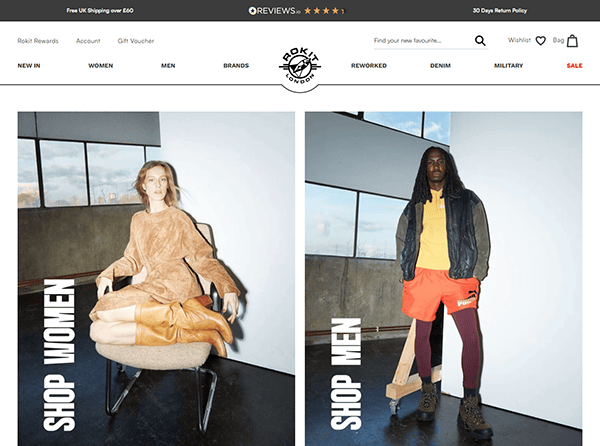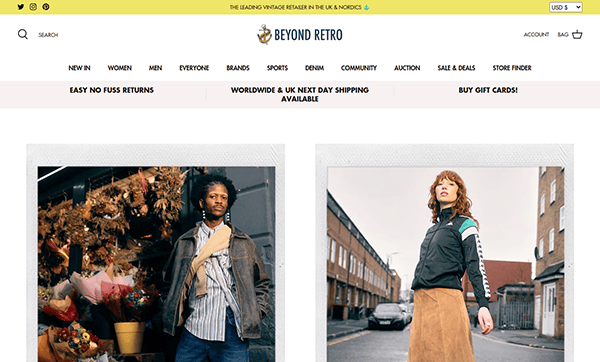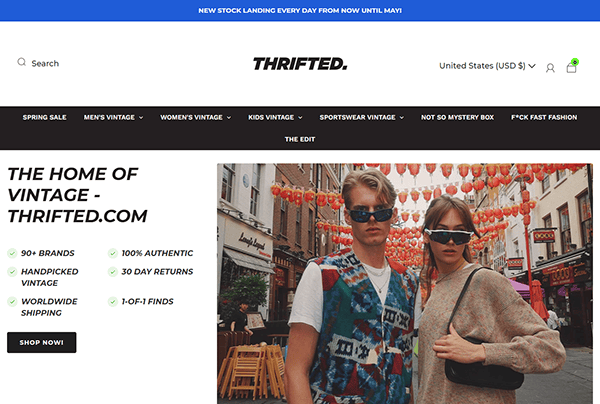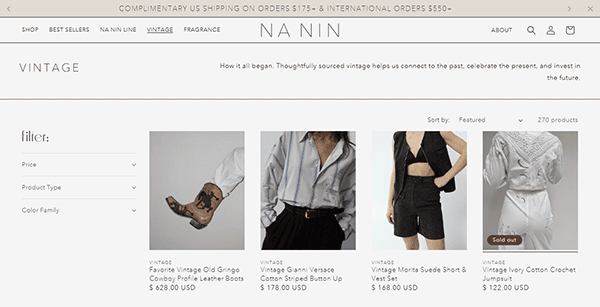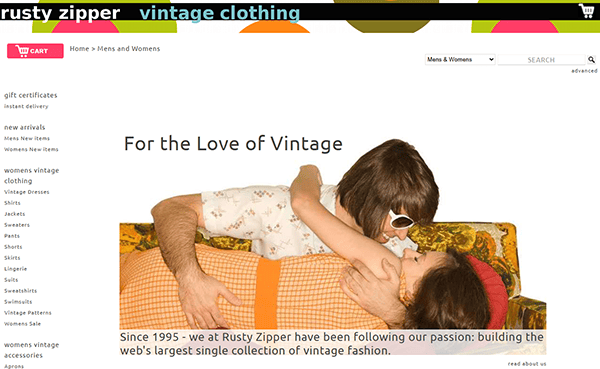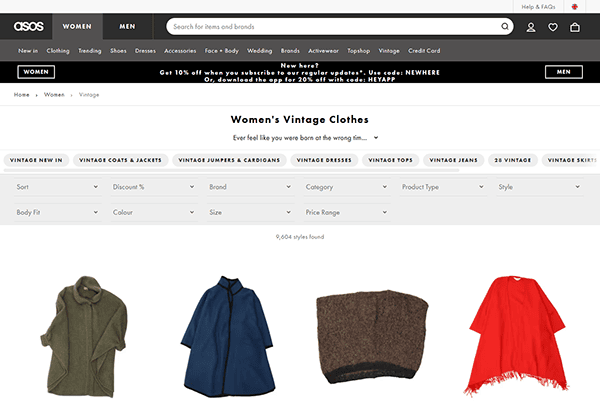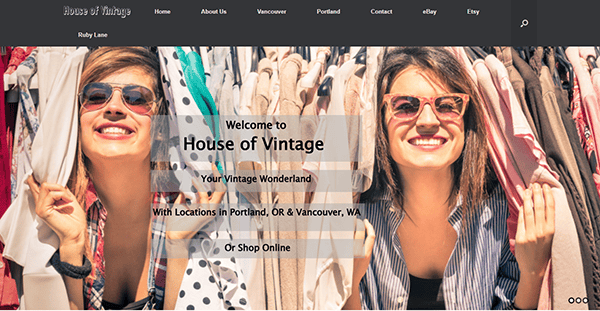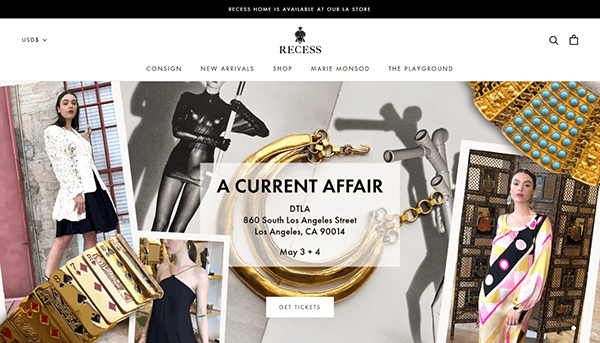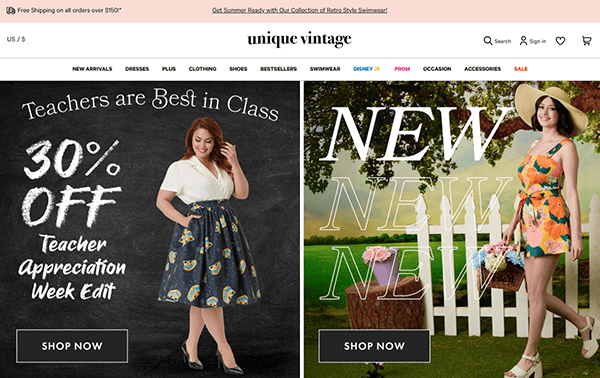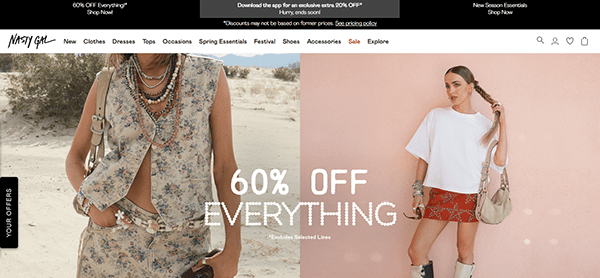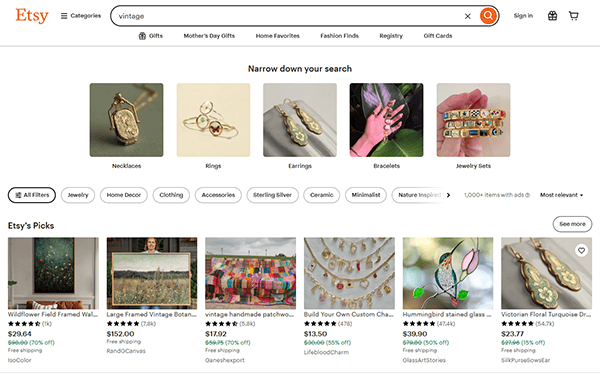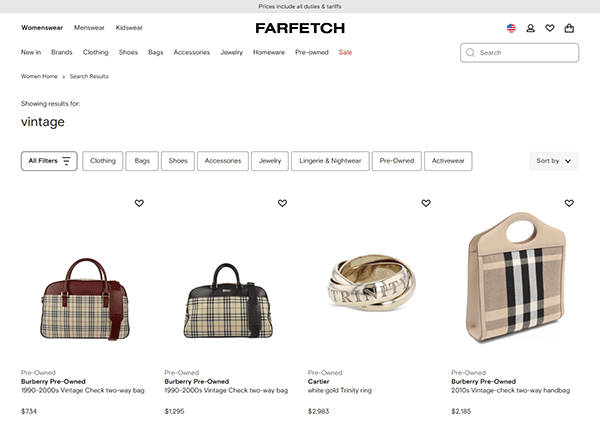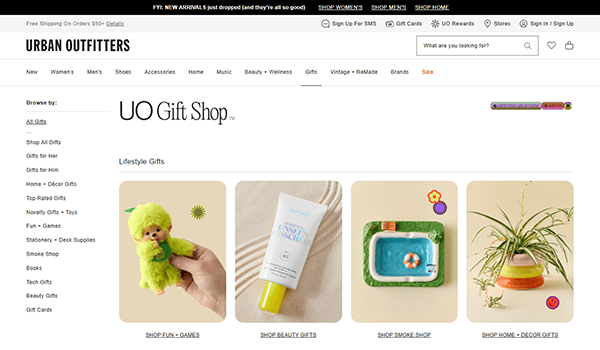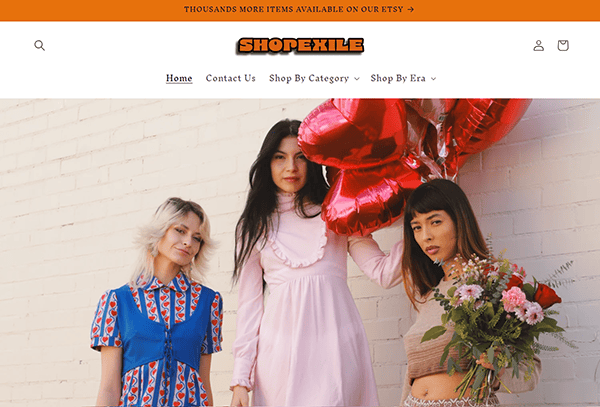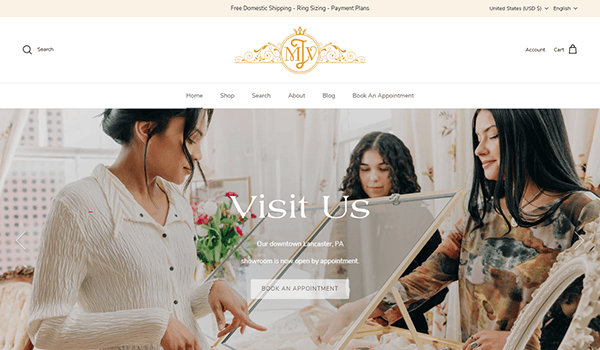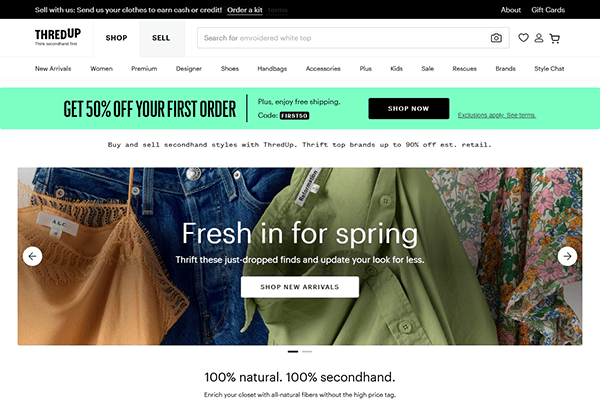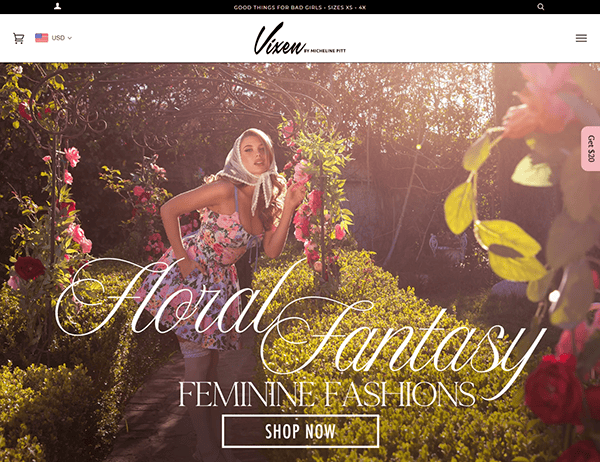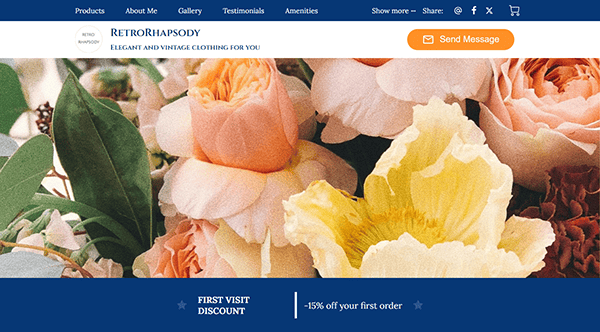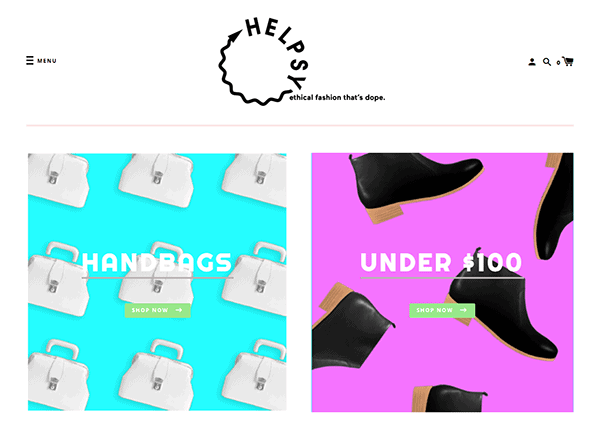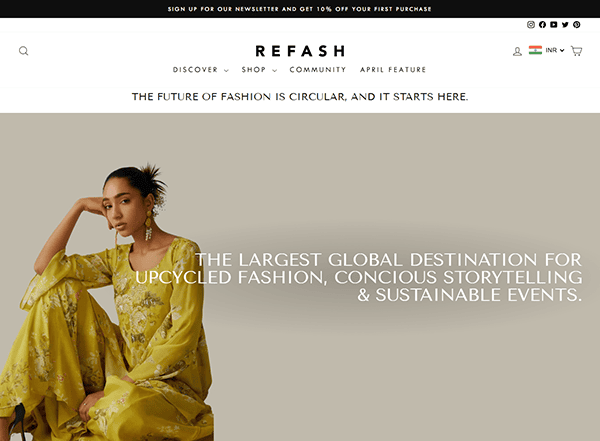Vintage clothing is more than just timeless style—it’s an art form that connects us to a rich tapestry of fashion history. Whether you’re looking for a crisp 1950s formal gown or a groovy 1970s band tee, the world of vintage offers an escape from mass-produced pieces. With trends constantly cycling back into popularity, vintage has established a thriving online presence, featuring personalized collections and distinctive branding.
Building a successful vintage clothing website demands thoughtful navigation, captivating imagery, and an authentic brand message. Since each piece is often unique and can’t be restocked, it’s crucial that the website fosters a sense of urgency and exclusivity. From well-structured product pages to detailed garment descriptions, a well-executed site should empower shoppers to make confident choices. Explore more about how websites work and why they’re vital in any industry here: https://www.cyberoptik.net/websites/.
The vintage clothing industry is fueled by enthusiasts who treasure designs that have stood the test of time. Websites that blend modern functionality with retro flair can attract both nostalgic souls and curious newcomers. In this post, we’ll delve into 20 examples of the best vintage clothing websites, showcasing how a well-balanced blend of aesthetics, user experience, and strategic marketing can help businesses thrive in this dynamic market.
Examples of the Best Vintage Clothing Website Designs
- Rokit: Rokit stands out for its expansive product range and clean, modern interface that still manages to evoke a retro vibe. Navigational tabs make it easy to locate men’s, women’s, and children’s vintage items, while the product pages include multiple images and detailed descriptions. A signature highlight is Rokit’s focus on sustainable fashion, underscoring how vintage clothing helps reduce waste. The brand’s social media integrations encourage community engagement, offering style tips and behind-the-scenes footage. The color palette is understated, letting the vintage pieces take center stage. Overall, it’s a best-in-class example of vintage web design done right.

- Beyond Retro: Beyond Retro has curated an impressive collection of second-hand and rare vintage finds, catering to a broad variety of tastes. Their homepage draws you in with bold graphics that simultaneously reflect an edgy, street-style aesthetic. High-resolution photos offer multiple angles, helping customers appreciate texture and detail. The clean, well-organized layout ensures visitors can seamlessly browse by era, brand, or category. Quick-loading pages and a streamlined checkout show a commitment to user experience. With regular blog updates featuring style guides and sustainability stories, Beyond Retro fosters an informed community of vintage enthusiasts.

- Thrifted: Thrifted puts a modern spin on decades-old fashion, transforming vintage clothing into a curated digital boutique. One of its strengths lies in its straightforward navigation and high-quality product photography, which effectively showcase each garment’s key features. Items are assigned categories by brand, era, and style, providing novices with a straightforward way to enter the world of vintage. The site’s cohesive color scheme is easy on the eyes, allowing the pieces themselves to shine. Thrifted’s approach to sustainability, detailed on a dedicated page, resonates with eco-conscious shoppers, adding a valuable layer to the brand’s overall identity.

- Na Nin Vintage: Na Nin Vintage is the brainchild of a passionate curator who infuses each piece with a sense of history and emotional connection. This is evident in the site’s warm, minimalist layout, where every product page draws attention to the craftsmanship behind each garment. The brand emphasizes storytelling, weaving personal narratives into product descriptions to bring each item to life. Their use of muted tones evokes a soft, nostalgic atmosphere, perfect for displaying earthy, decades-old fabrics. With dedicated lookbooks and style inspiration, the site leaves an indelible impression of authenticity and care.

- Rusty Zipper: Rusty Zipper sports a playful name and an equally fun interface that pays homage to retro design elements without sacrificing modern functionality. A bright, slightly quirky homepage immediately captures your attention. The brand’s variety ranges from everyday casual pieces to elaborate costumes, making it a go-to for vintage enthusiasts seeking distinctive finds. The site stands out for its robust search function, allowing users to filter by era, style, color, and size. With a lively blog that dives into fashion history and styling tips, Rusty Zipper strikes a perfect balance between entertainment and information.

- ASOS Marketplace Vintage: Known for featuring independent boutiques and vintage sellers, ASOS Marketplace boasts a dedicated vintage section that seamlessly merges an indie spirit with a large-scale e-commerce platform. Its design is polished and user-friendly, featuring consistent branding while allowing each seller’s aesthetic to shine. The rating system and feedback from buyers build trust, ensuring authenticity in every purchase. By showcasing styling ideas within each listing, the platform encourages shoppers to mix and match vintage items for a fresh, contemporary look. This synergy between community-building and retail cements ASOS Marketplace as a prime location for discovering rare gems.

- House of Vintage: House of Vintage prides itself on offering a tailored shopping experience that combines bohemian, punk, and classic vintage influences. Their homepage greets visitors with a dreamy slideshow, highlighting seasonal collections and in-store events. Dedicated sections guide you through curated categories, such as “Party Wear” or “Work Attire,” bridging the gap between everyday style needs and special occasions. High-quality photos help customers see detailed embroidery or subtle fabric nuances. Regularly updated blog posts covering the latest fashion re-emergences add an educational layer, making House of Vintage a must-visit for both style vets and newbies.

- Recess LA: Recess LA is a Hollywood favorite, boasting a collection of designer vintage treasures that cater to high-end tastes. The site layout is sleek and uncluttered, reflecting its upscale approach. High-resolution product images capture small details, such as stitching and embellishments, underscoring the luxurious feel of each piece. Search filters allow you to narrow your hunt by designer, era, and even color palette. The brand puts a spotlight on authenticity and provenance, informing shoppers about a garment’s history. This dedication to storytelling fosters trust and adds an extra spark of allure, especially for serious collectors.

- Unique Vintage: The Unique Vintage website offers a delightful and immersive shopping experience for lovers of retro fashion. Its visually captivating design beautifully showcases vintage-inspired clothing, allowing users to explore styles from the 1920s to the 1960s effortlessly. The site is thoughtfully organized, featuring intuitive filters by era, size, color, and price, making it easy to find the perfect piece. Customers appreciate the inclusive sizing options, with many praising the quality and timeless appeal of the garments.

- Nasty Gal Vintage: Nasty Gal’s vintage section features bold, trend-forward selections that seamlessly integrate into the brand’s overall aesthetic. The website layout is edgy yet refined, with striking photography that emphasizes statement pieces. Their product descriptions are infused with playful language, appealing to a younger demographic. Items are organized by style or theme—’90s grunge, ’70s disco—making it easy to find your vibe. A dynamic “New Arrivals” section refreshes frequently, offering reasons to return. The brand’s energetic approach to marketing is evident in its cross-channel integrations, which combine social media excitement with a streamlined shopping experience.

- Etsy Vintage: Its vintage category is a treasure trove where sellers from around the globe showcase everything from antique dresses to retro sneakers. While Etsy itself is a broad marketplace, its design is neat and intuitive, allowing you to narrow searches by price, era, or item type. Each listing includes star ratings and reviews, offering transparency into the quality and authenticity of products. Shoppers can interact directly with sellers, resulting in a more personal touch that larger platforms may lack. The community-driven aspect fosters a feeling of discovery, making every visit feel like a one-of-a-kind shopping adventure.

- Farfetch Pre-Owned: Farfetch Pre-Owned brings luxury vintage to a global audience by partnering with boutiques that sell authenticated designer pieces. Its modern, minimalist web design spotlights product imagery and brand recognition. A robust filtering system lets users search by designer, condition, and size, meeting the expectations of upscale clientele. Detailed product pages, complete with measurements and condition notes, help manage buyer expectations. The site’s editorial content provides styling ideas, bridging the gap between old and new. With seamless checkout and worldwide shipping options, Farfetch Pre-Owned sets the gold standard for vintage clothing e-commerce in the high-end sector.

- Urban Outfitters Vintage Collection: Urban Outfitters has carved out a special spot for vintage lovers by curating a distinctive selection of retro-inspired or genuine vintage pieces. Their site layout mirrors the leading brand’s cool, edgy vibe while clearly differentiating vintage from new. A lively homepage slider often features styled shoots to show how these classic garments can complement modern wardrobes. The product pages are straightforward, featuring sizing tips and suggestions on how to incorporate pieces into everyday outfits. Frequent refreshes keep the inventory interesting, ensuring regular visitors can discover new finds. It’s a prime example of modern meets retro.

- Shop Exile: Shop Exile excels in bridging affordability with style, offering budget-friendly vintage that doesn’t compromise on quality. Its bright, visually pleasing website design draws attention to featured collections, like festival outfits and seasonal picks, giving visitors quick styling ideas. Each listing comes with a succinct description and a note about any visible wear, highlighting transparency in the buying process. Clear calls to action and a minimalistic navigation bar make it a breeze to shop. Shop Exile’s promotional sales and social media showcases keep the brand top-of-mind for fashion-lovers, making vintage accessible to a broad audience.

- Maejean Vintage: It prides itself on its curated selection of delicate and feminine pieces. The site’s pastel palette and airy design perfectly complement the dreamy aura of its garments. Detailed product pages highlight subtle embellishments or print details, giving each piece a moment in the spotlight. The brand also incorporates compelling editorial content, such as lookbooks and styling tips, that encourage shoppers to explore different eras and silhouettes. A well-maintained newsletter subscription keeps customers in the loop about restocks and exclusive sales. It’s a compelling case study in leveraging cohesive visuals and storytelling to make a substantial impact.

- ThredUP: ThredUP may be known primarily for second-hand fast fashion, but its vintage offerings are well-organized and easy to discover. A robust sorting feature includes era filters, allowing shoppers to zero in on authentic, older pieces. Listings are complete with multiple photos, brand details, and a condition rating to manage buyer expectations. The overall website design is cheerful and straightforward, designed to encourage eco-friendly consumer habits. ThredUP’s “Clean Out” initiative also invites users to send in their pieces, promoting a circular approach to fashion. Its balance of convenience and variety underscores its popularity among thrift-savvy customers.

- Vixen by Michelle Pitt: The Michelle Pitt website offers a visually striking and cohesive design that reflects the brand’s bold, vintage-inspired aesthetic. The site’s layout is clean and intuitive, allowing users to navigate through collections and product categories with ease. High-quality imagery and detailed product descriptions enhance the shopping experience, providing customers with a clear understanding of each item. The website’s responsive design ensures a seamless browsing experience across various devices, catering to both desktop and mobile users. Customers have praised the unique designs and flattering fits of the clothing, noting the brand’s commitment to style and quality.

- Retro Rhapsody: Its site design embraces bold typography and a colorful aesthetic that immediately immerses you in a funky, retro mood. High-contrast banners highlight promotions or seasonal finds. The brand organizes its inventory by decade, making it easy to explore your favorite time periods. Each product page features multiple angles, zoom features, and a short video for select items. The integrated style blog includes interviews with vintage aficionados and tips on outfit pairings. This storytelling approach elevates the retail experience, reflecting the emotional connection people often have with pieces from bygone eras.

- Helpsy: Its website stands out for its commitment to ethically sourced and sustainable vintage garments. The web design is polished and minimalistic, spotlighting a curated selection of refined apparel. Filter options include material and condition, allowing shoppers to find items that meet their specific ethical standards easily. Each piece is photographed on a model, showing how it fits and drapes. The brand also offers styling advice through short editorial pieces, illuminating the context behind different eras. From start to finish, Helpsy provides a thoughtful and refined shopping experience that resonates with conscious consumers.

- ReFASH: It brings a global perspective to vintage clothing, partnering with designers who upcycle or refurbish older garments into contemporary pieces. Its website layout is dynamic, incorporating animated graphics and scrolling effects to create an engaging user experience. The brand’s mission revolves around sustainability, and it devotes space to explaining the environmental impact of each collection. In-depth product descriptions and vivid photos illustrate the transformation process, building excitement around eco-innovation. ReFASH’s blend of content marketing and e-commerce caters to trendsetters who value ethical fashion, making it a unique addition to the best vintage clothing websites.

An outstanding vintage clothing website seamlessly merges nostalgia with modern convenience. Through clean navigation, striking images, and informative content, businesses can convey the unique beauty and importance of each item. In a sector where inventory turnover happens quickly and no two pieces are exactly alike, a well-designed, secure platform is key.
When executed correctly, vintage web design allows you to stand out from competitors by weaving personal narratives into each garment’s presentation. By sharing insights about style, era, and care instructions, you invite shoppers into a richer fashion experience. From vibrant, youthful looks to sophisticated, luxurious designer finds, the online vintage community is as varied as the clothing itself.
Above all, a strong website cultivates trust. Offering transparent product descriptions, honest photos, and streamlined purchase processes gives shoppers confidence. In this digital era, your online storefront is a reflection of your brand’s authenticity. The more you invest in clarity and creativity, the more you’ll attract a loyal audience.
Top 10 Most Important Aspects of a Vintage Clothing Website
- Authentic Branding: Emphasize your vintage identity through color palettes, typography, and branding elements that connect with classic eras.
- High-Quality Imagery: Invest in professional photographs or well-lit snapshots to highlight fabric details, unique prints, and garment condition.
- Detailed Product Descriptions: Provide context for the era, sizing information, and any notable flaws or signs of wear. Transparent listings build consumer trust.
- Easy Navigation: Organize items by category, era, or size to help shoppers find the perfect piece without guesswork.
- Responsive Design: Ensure your website functions smoothly on mobile devices, as many shoppers browse on phones and tablets.
- Storytelling & Content: Use blogs or editorial pages to share styling tips, historical context, and brand insights that create a deeper connection.
- Search & Filter Options: Allow users to refine their searches by size, era, color, or designer to streamline their shopping experience.
- Consistent Updates: Regularly refresh the inventory and blog content to keep users engaged and excited about new arrivals.
- Customer Reviews: Gather and display testimonials or product ratings to enhance credibility and guide hesitant shoppers.
- Secure Checkout: Ensure payment methods are both secure and user-friendly, providing reassurance to customers that their transactions and data are protected.
FAQs about Vintage Clothing Web Design
How can I make my vintage clothing website stand out from competitors?
Focusing on storytelling and authenticity is key. By showcasing the unique history and character of each piece, you create a personalized experience that resonates with shoppers.
What platform is best for building a vintage clothing website?
WordPress is a versatile and user-friendly option that offers many customization possibilities and a range of e-commerce plugins to get you up and running smoothly.
How much does it typically cost to design a vintage clothing website?
Basic websites can begin around $2,000 and increase from there based on additional features like advanced filters, custom photography, or unique branding elements.
How often should I update my vintage clothing website?
Keeping your site current is essential, but make sure updates provide actual value to visitors. New arrivals, fresh blog posts, or restocks should be meaningful additions.
Is good web design really that important for my vintage clothing business?
A professional, user-friendly design can greatly influence customer trust and sales. It helps present your collection in the best possible light, encouraging shoppers to become repeat customers.
Ready to elevate your vintage clothing website? Contact CyberOptik for a free proposal for your new vintage clothing website design and set your business up for success.


